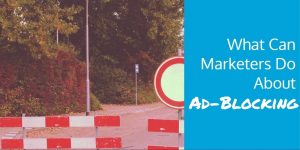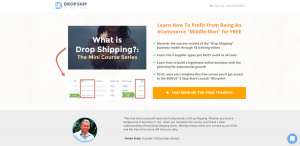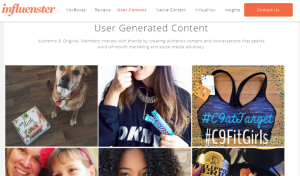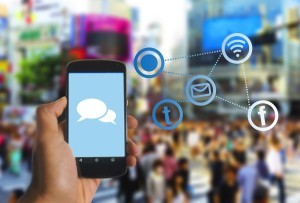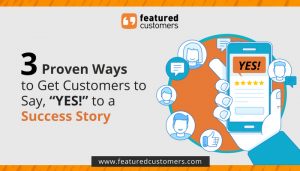This post is based on a Facebook Live event I did with my co-worker, Madison, based on different Pinterest rumors we were hearing.
We’ve all heard them. The whispers in the social media blogosphere outlining theories to gain Pinterest followers fast or tips to increase engagement today. Soon we hear these theories so often we start to question our own sound judgment.
Yes, we are talking about Pinterest myths.
Those “suggestions” hit one popular blog then spread rampantly throughout the Internet. After such widespread appeal, dedicated audiences start to soak them up as pure truth. Some followers even go so far as to promote them on their own blogs, adding more fuel to the myth fire.
Next thing we know dedicated Pinners are deleting Pins right before their prime and filling queues with hundreds of daily Pins. Or worse, they are not even giving Pinterest a fair shot as a marketing tool.
We’re here to set the record straight!
In typical Tailwind fashion, we are even going one step further to finally put these myths to rest. Our team has finished an in-depth analysis of hundreds of accounts. We now have hard data to back up our time on the soapbox.
So without further ado, let’s dig into some serious myth busting.
1) Pinterest is Only for Middle Aged Women
There are 100 million active monthly users on Pinterest today. It’s not even feasible that they are all middle-aged women only interested in DIY activities or recipes. As a population, we are much more diverse than that.
Pinterest is a robust platform that caters to a variety of diverse interests, as well as age groups. One-third of millennials leverage Pinterest to plan for the future.
Topics include career planning, perusing business ideas or planning a vacation.
There are even millennial men Pinning interesting articles to their favorite boards.
Gasp!
Yes, men are on Pinterest as well. While they might not make up as large of a market share as women, men are seeing the widespread appeal of Pinterest. In fact, in 2014 alone Pinterest double the number of male users on the platform. Those numbers are set to drastically increase as men realize the powerful benefits of Pinterest.
2) It’s Good to Use the Exact Same Content on Other Platforms
If there is a single golden rule in social media, it’s to optimize for the platform you are on.
The creators of each platform designed the finer details of their medium to meet a different need in the marketplace. Facebook captures the here and now. Twitter gives you access to a global conversation. Instagram shows a beautiful snapshot of a far off place.
Pinterest inspires you for the future.
Optimizing for each platform shows the audience there that you understand what they are looking for. This will help you gain traction much faster than plopping your cookie cutter content on every medium.
Not optimizing is the equivalent of walking into a small town country bar in a tuxedo. Everyone knows you aren’t from around here. It just doesn’t fit in.
This doesn’t mean that you can’t share the same photo or blog post to each channel. What it does mean is that it’s increasingly important to tailor your layout and description for that platform. Facebook and Twitter leverage landscape photos. Instagram photos are square. Pinterest thrives on a vertical layout, maximizing the real estate and giving viewers a better chance to engage. Pinterest descriptions include more details, speaking the audiences’ interest to learn more.
Here’s an example of the same photo reformatted from Instagram to Pinterest.
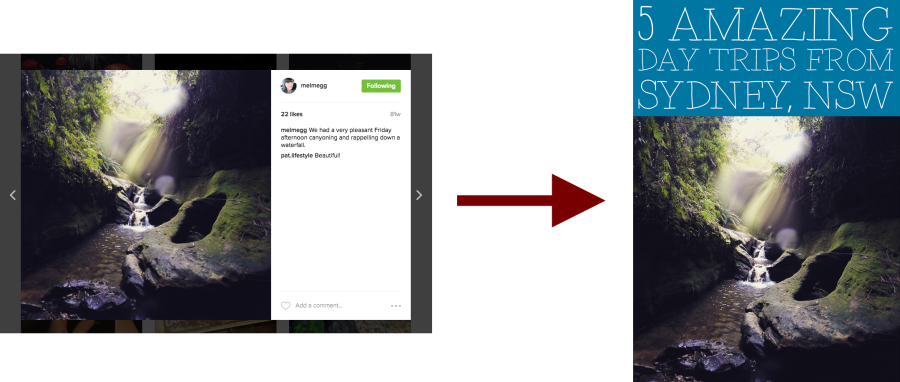
3) Hashtags Work the Same on Pinterest as Twitter or Instagram
To tackle this myth, we decided to go straight to the source. Here is what the Pinterest help center states:
“Stick to one hashtag in your ad description. Hashtags don’t work on Pinterest like they do on other platforms—they don’t help you track what’s trending and they can confuse Pinners. If you do include a hashtag, try using your business name or tagline.”
Bottom line, Pinterest doesn’t use hashtags the way Twitter or Instagram does. Both of those platforms leverage hashtags to search for related content. Pinterest fundamentally serves as a search engine, thus eliminating the need for hashtags altogether. It’s also important to note that they don’t allow you to run an ad with a description including more that one hashtag.
If you do decide to include one in your description, leverage it as a brand recognition tool. This could either be your business name or your tagline. Use them, sparingly, to direct people to your business, not away from it.
4) Pinning in Real Time is Better than Using a Scheduler
First, we’ll dive into the core of this. Pinterest treats Pins Pinned through one of their scheduling partners exactly the same as a Pin Pinned in real time. Real-time Pinning does not give you a better advantage in the smart feed, nor does scheduling.
The main difference is consistency and timing.
Continually hitting optimal timeframes without a schedule proves to be a large hurdle for marketers. Optimizing when Pins begin to show in your follower’s feeds can improve the initial engagement rates for that Pin, which in turn impacts how many people will ultimately see the Pin in its lifetime. Additionally, meeting the desired volume of Pins for your specific strategy day in and day out without scheduling is a challenging task.
Since we are a scheduling platform, we did a little more digging into the success of accounts who leverage scheduling verse those who don’t.
In the first six months of a brand new Pinterest account, accounts that used Tailwind:
- Were 3.6x more active;
- Gained 6x as many followers;
- Earned 11x times as many Repins;
- Earned 3x times as many Repins per Pin on average.
Not to toot our own horn, but the numbers don’t lie. Scheduling on Pinterest, and subsequently the power of Tailwind, is rocking the Pinterest marketing space. Not a bad ROI for a $ 15 a month, and that’s only within the first six months of use.
Boo yeah!
5) It’s Ok to Use a Scheduling Tool that Isn’t a Pinterest Partner
In short, not using a Pinterest Marketing Developer Partner (MDP) puts you at risk. Users leveraging Promoted Pins and Buyable Pins open up more risk to fraud, potentially putting their bank account at risk, when not using a vetted partner.
Non-verified 3rd party tools require you to enter your Pinterest account e-mail and password into their platform. To put it bluntly, they don’t have the security infrastructure to keep your information safe.
Pinterest’s security operations far exceed the resources of any of 3rd party provider. They are equipped to manage the safety of millions of users.
Only trust who Pinterest trusts.
As a certified Marketing Developing Partner, with Tailwind you create your account by logging in through Pinterest. This means you are covered by Pinterest’s extensive security team as well as our own security measures.
Besides safety, there are other advantages to using an MDP.
As a Pinterest partner, we build tools that follow the rules and regulations. We work closely with Pinterest to ensure that we are putting out the best tools for you to use. This includes working in line with their vision for Pinterest users. Ultimately, this common ideology gives you a better footing creating and executing your Pinterest strategy.
6) You Should Pin 300+ Pins Per Day
Let’s kick off this section with, wow, that’s an insane number of daily pins! Even with a scheduling tool, maintaining that type of strategy can be daunting.
For sanity’s sake, we are happy to put a halt to this myth.
We’re currently working on a full analysis on this specific issue. What we’ve found so far is that Pinning more than a few Pins a day can help you grow your following.
There’s a catch.
Follower growth generally increases as you Pin more, but will flat line somewhere above 50 Pins per day. Pinners going above 50 Pins a day see a large drop off of Repins. Engagement drastically suffers above 50 pins.
There are diminishing returns in extremely high volume Pinning. It appears that penalties begin to occur at high Pin rates, which decrease the visibility of your Pins and profile.
7) Follower Count is the Most Important Metric
Here’s the scoop, your most important metrics are based entirely on your unique goals.
If you’re a blogger looking to increase website traffic, then your golden metric hinges on visitors from Pinterest. E-commerce sites need to evaluate conversations from Pinterest traffic. Brand awareness typically aligns with follower count and visibility. Individuals looking to establish themselves as an influence value follower numbers.
While follower count can factor into each of these goals, it’s not the end all be all. Most times it’s better to have a smaller, more engaged audience of your unique tribe as opposed to a giant following of digital zombies.
Know your goals for Pinterest, and then evaluate the metrics that help you measure your progress toward that goal.
8) Pinterest is Punishing Group Boards
Pinterest is not punishing group boards. They are still a great way to reach new audiences, curate quality content and see what type of content people respond to.
The difference is the Smart Feed.
For a long time, some Pinners used group boards to game the system. This resulted in the same spammy content being posted again and again. While it could help boost visibility, eventually it led to the board being less valuable to Pinners. The Smart Feed emphasizes quality, not the number of times you Pin. Pinterest adjusted the visibility of group boards to provide more value to users rather than encourage regurgitated content.
It’s time for a new strategy, one that is closer to the original intent behind group boards. Share new content that lines up with the content, description and theme of the group board. Find your Tribe by engaging with other users. Learn what’s working in your industry. Curate great content.
9) You Have to Pay for Traffic
Many Pinners saw a decline in traffic after the Smart Feed debuted. This is primarily because Pinterest adjusted the type of content users see.
Rather than chronological content, now users see Pins based on a mix of people who they are following, interests, related Pins, and, of course, Promoted Pins. How these Pins are ranked is a bit of a mystery. We do know that a number of factors go into how they are shown: domain quality, Pin quality, Pinner quality, and topical relevance.
At the risk of sounding like a broken record, quality is key.
The old days of trying to game the system by Pinning repeatedly are gone, as we mentioned with group boards. It’s back to basics. Verify your domain, optimize your Pins, use rich keywords, and make sure your site is strong.
If you’re still unsure about the Smart Feed, check out this in-depth article by our CEO Danny Maloney outlining all the ways changes, and advantages, that the Smart Feed brings.
10) Rich Pins Reduce Site Traffic
Rich Pins provide extra information in the Pin description. Recipes outline ingredients and products have purchasing information. Many users believe that the extra information limits the click through traffic.
That’s not the case.
Rich Pins provide extra information to entice engaged users to click through. While the recipe rich Pin outlines the ingredient list, users still have to click through to see the full set of instructions. Going the extra step to create a Rich Pin also enhances the user experience. The extra information gives Pinterest more data to pull from when aggregating content for users with similar interests.
It’s also important to note that the Pin ranking system factors in trust. Rich Pins indicate trust with Pinterest.
At the end of the day, the benefits outweigh any perceived negatives.
11) Delete Pins With NO Engagement
We saved the one we are most passionate for last: deleting Pins.
Quickly stepping up to the soapbox. Pulling out a megaphone. Ahem.
DON’T DELETE PINS WITH NO ENGAGEMENT!
Stepping down from the soapbox.
Deleting Pins solely because they didn’t perform well in the first few weeks cuts your virtual legs out from under you. Many Pins take weeks, if not months, to slowly make its way in front of the influencer whose Repin takes it viral.
If you’re a regular on our blog, this isn’t anything new. We’ve been on our soapbox about this particular issue for what feels like ages.
Well, now we can back it up. Here’s what our team discovered:
People who delete many Pins see very low Repin and follower growth rates, equivalent to those who only Pin 0-5 times per day.
Did you catch that last part? We’ll repeat it just to be safe. If you delete a lot of your Pins, your engagement is equivalent to those who only Pin 0-5 times per day. You’re doing as well as the person who ignores Pinterest completely!
If you’re going to invest the time and energy to put Pins out there, as least allow them the ability to bring returns. Otherwise, you are doing yourself a huge disservice.
We’ll call that myth extra busted.
Did we miss any myths? What other questions to you have about Pinterest? Let us know in the comments.

(72)
Report Post

